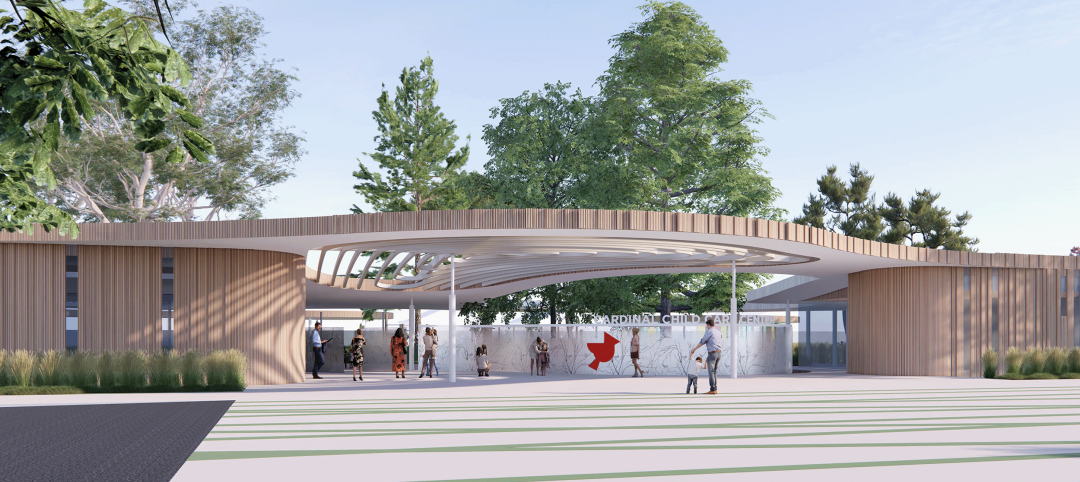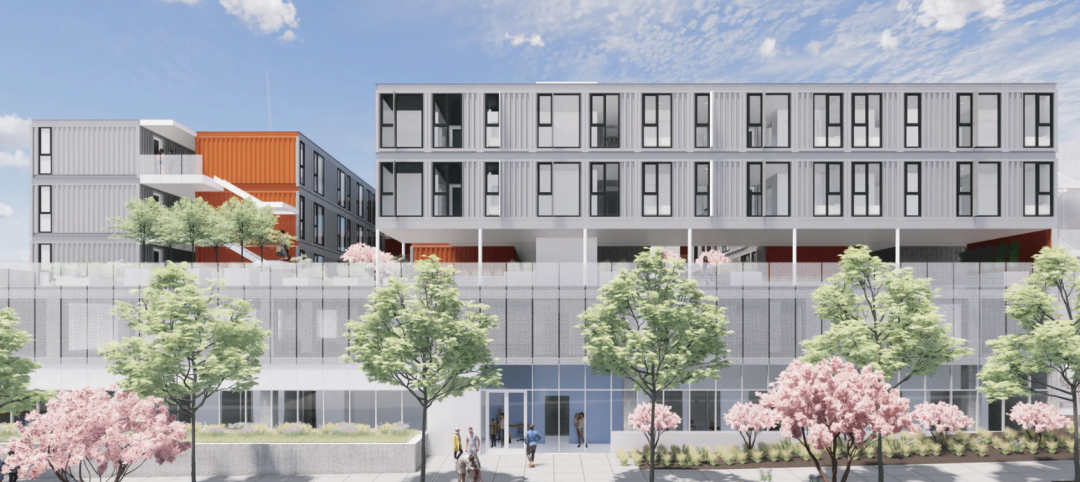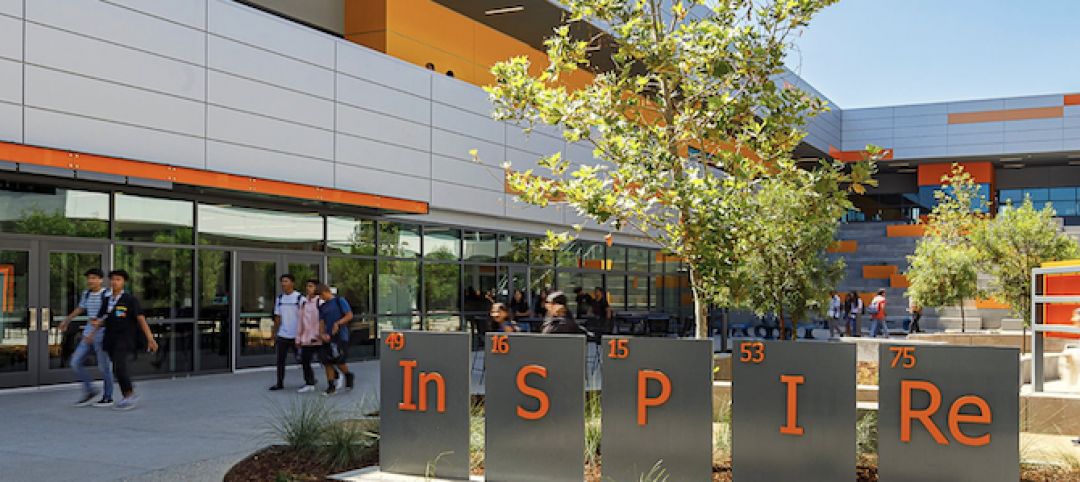It takes more than big windows and a few plants to create an effective biophilic design. Research shows that different elements evoke very different experiences and emotions in people, highlighting the importance of making informed design choices to support a project’s specific goals.
For the renovation of Chapman University’s Rinker Health Science Campus and Brain Institute, designers enlisted LPAred, LPA Design Studio's research team, to explore aspects of biophilic design. Chapman was already committed to creating a nature-based facility, recognizing the benefits, but officials wanted to ensure that they were making the right choices — and that, as good stewards of their budget, they could explain those choices to administrators and the public.
Research studies show that design can play a key role in improving physiological responses to environmental stressors (Steg, 2007) and reducing recovery time after exposure to those stressors (Heerwagen, 2009). The connection to nature can be visual, multisensory, active or passive (Heerwagen, 2009).
Human beings have an uncanny ability to perceive different characteristics of nature. Even when materials look the same to the eye, we react differently to them.“
We found that the more natural and relatable it is to nature, the more authentic a material is, the better the outcomes are,” said LPA research specialist Rachel Nasland. “If you hold up a synthetic wood against natural wood, they look identical, but human receptors can distinguish the difference.”
Research shows that we experience nature in three key ways: 1) direct experience, such as actual contact with natural light, plants and water; 2) indirect experience, such as exposure to representations of nature; and 3) experience of a place and the spatial features, including wayfinding and mobility. Elements in each experience category generate very different reactions in three main areas of physiological response — a) stress reduction, b) cognitive performance and c) emotion, mood and preference.
For Chapman, the framework helped guide the discussions and, in many cases, reinforce design decisions for the 45,000-square-foot renovation. For example, designers initially questioned a proposal that would move students from a low-ceiling entrance into a broader space with tall ceilings. But research supported the concept, suggesting that the transition from an enclosed area to an expansive space would evoke a sense of “prospect and refuge,” creating a sense of comfort and exploration in students.
“We realized that what our client was requesting was more in line with what research was telling us is a better way to build a space,” says LPA interior designer Sherine Teymour. “It evokes a feeling of safety as your eyes open to this more expansive space.”
The three stairways in the renovation became a main focus for the designers, providing the foundation for how students would circulate through and interact with the building. Each staircase was designed with its own identity, using research to support the choices. Each allows light into the spaces in different ways. Two of the staircases have long, vertical, natural wood elements. Skylights introduce diffused natural light that bounces off the wooden beams. “Our concept was to create the feeling of encountering the forest,” Teymour says.
Throughout the building, Chapman leaders wanted to use real wood whenever possible; authenticity was a core goal. “They wanted that touch and feel of nature within the building,” says LPA Design Director Silke Frank. Research helped validate that choice, including the decision to use exposed glulam (glue-laminated) engineered wood beams in public areas. A recent study (Kellert & Calabrese, 2015) found that natural wood enhances physical well-being, reduces stress and boosts perceptions of a space. Painting or covering the wood grain reduced the biophilic effects, the study found.
Consideration of the biophilic goals influenced choices throughout the facility. Spaces were opened to natural light, accented by lighting strategies that maintained the benefits of the spaces at night. A glass accordion wall connects the indoors to outdoor spaces with trees and benches. A parking lot was converted into a green space, connecting the buildings and programming elements. A wellness center, programmed for reflection, prayer and relaxation, includes a water element, a proven stress reducer.
Research provided a foundation for discussions, guiding the team. It also created a powerful tool to re-evaluate the return on investment of choices, including the biophilic implications.
“The research strengthened our narrative and allowed us to have a more informed conversation with our client,” Teymour says. “It helped justify costs for certain moves and helped us let go of things that just weren’t in line with our overall goal.”
Developed through LPAred - LPA Research, Education and Design - the firm's in-house research group.
More from Author
LPA | Aug 26, 2024
Windows in K-12 classrooms provide opportunities, not distractions
On a knee-jerk level, a window seems like a built-in distraction, guaranteed to promote wandering minds in any classroom or workspace. Yet, a steady stream of studies has found the opposite to be true.
LPA | May 13, 2024
S.M.A.R.T. campus combines 3 schools on one site
From the start of the design process for Santa Clara Unified School District’s new preK-12 campus, discussions moved beyond brick-and-mortar to focus on envisioning the future of education in Silicon Valley.
LPA | Mar 28, 2024
Workplace campus design philosophy: People are the new amenity
Nick Arambarri, AIA, LEED AP BD+C, NCARB, Director of Commercial, LPA, underscores the value of providing rich, human-focused environments for the return-to-office workforce.
LPA | Feb 8, 2024
LPA President Dan Heinfeld announced retirement
LPA Design Studios announced the upcoming retirement of longtime president Dan Heinfeld, who led the firm’s growth from a small, commercial development-focused architecture studio into a nation-leading integrated design practice setting new standards for performance and design excellence.
LPA | Mar 2, 2023
The next steps for a sustainable, decarbonized future
For building owners and developers, the push to net zero energy and carbon neutrality is no longer an academic discussion.
LPA | Dec 20, 2022
Designing an inspiring, net zero early childhood learning center
LPA's design for a new learning center in San Bernardino provides a model for a facility that prepares children for learning and supports the community.
LPA | Aug 22, 2022
Less bad is no longer good enough
As we enter the next phase of our fight against climate change, I am cautiously optimistic about our sustainable future and the design industry’s ability to affect what the American Institute of Architects (AIA) calls the biggest challenge of our generation.
LPA | Aug 9, 2022
Designing healthy learning environments
Studies confirm healthy environments can improve learning outcomes and student success.
LPA | Jul 6, 2022
The power of contextual housing development
Creating urban villages and vibrant communities starts with a better understanding of place, writes LPA's Matthew Porreca.
LPA | Apr 28, 2021
Did the campus design work?
A post-occupancy evaluation of the eSTEM Academy provides valuable lessons for future campuses.
















